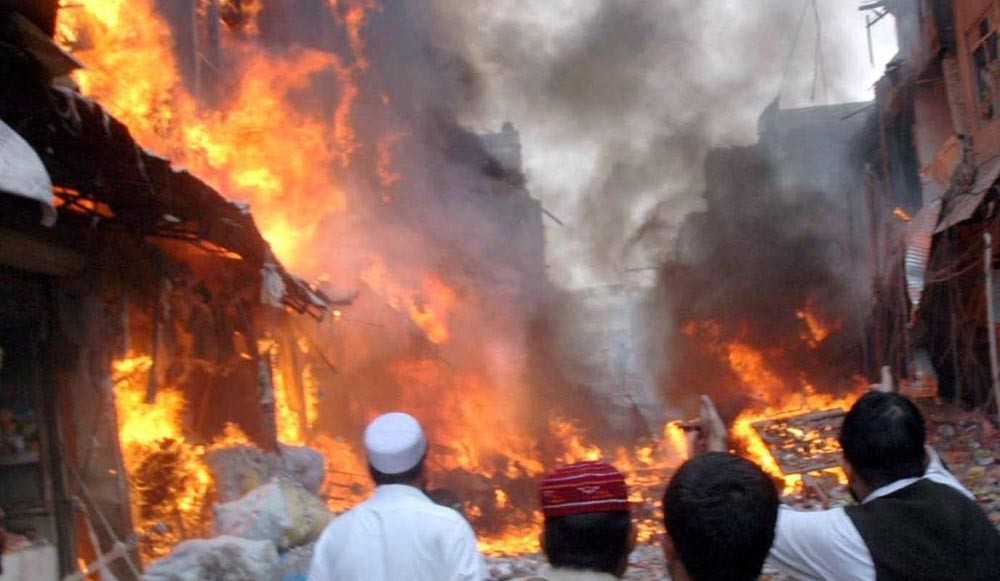
What is the true measure to gauge terrorism, violence or radicalisation?

Pakistan is having its safest year in a long time. According to data taken from the South Asia Terrorism Portal, the total fatalities in terrorist violence for 2015 (so far) are 3495 (This figure includes civilians, security personnel, and terrorists). This figure is significantly lower than the 5496 deaths recorded in 2014, and the 5397 in 2013. In fact, if December passes by relatively peacefully, 2015 will be the safest year for the country since 2007, when 3598 people died because of terrorism.
Has Pakistan finally reversed the tide in the war against terrorism?
One could be fooled into believing the same, if only we didn’t know any better. Under the current circumstances, the best yardstick to judge Pakistan’s efforts to defeat terrorism is the National Action Plan (NAP) -- the document put together in the aftermath of last year’s horrific terrorist attack at the Army Public School in Peshawar, that left over 130 people, mostly children, dead.
Clearly, something is amiss. Most of the points that make up the NAP are historic non-starters, and remain so to this day. The ones that stand out the most are crackdown on terrorist financing, zero tolerance for militancy in the Punjab, dealing firmly with sectarian terrorists and most laughably, ensuring against the reemergence of proscribed organisations.
What then has happened?
"It’s like a clenched fist," says Tariq Parvez, former Director General of the Federal Investigation Agency (FIA) and Chairman of the National Counter-Terrorism Authority (NACTA). "There have been successes against terrorists and organisations, but the apparatus and ideology that feed this terrorism, all of that is still present -- how long can you keep a fist clenched?"
Most of the successes the former DG talks about are common knowledge. Most notably, the death of Malik Ishaq, the founding member of the Lashkar e Jhangvi, was heralded as a major success in Pakistan’s counter terrorism efforts. Recently, the last founding member of the outfit, Haroon Bhatti, was also killed in a shootout. Last month, a senior TTP commander, Saeed Sajna was reportedly killed in a US drone strike in Afghanistan.
Recently, the government and the security apparatus have also traded jabs on the lack of progress on the NAP. "We’re keeping our end of the bargain," says a senior intelligence official, speaking on condition of anonymity. "We’ve destroyed their hideouts and eliminated their leaders, but if you continue to sleep with religious leaders due to their political influence and street power, what can we do?"
A recent example of how religious extremism continues to thrive in the urban centres was when a shopkeeper in a Lahore electronics market posted a sign outside his shop banning the entry of Ahmadis. While authorities reacted quickly to the ensuing storm on social media and arrested the man in question, hundreds gathered outside to protest the arrest. Bail was quickly posted, and the man released amid garlands. The next morning a signboard asking for "Ahmadis to wear identification signs" was posted outside the said establishment.
"We’ve seen this so many times before, a little street pressure is all it takes, and poof, the NAP is swept under the carpet," says Parvez. "This lack of will to take on the religious element has seeped through the system so even the Law Enforcement Agencies (LEAs) are unwilling to take any action."
Read also: Here we go again…Maulana Abdul Aziz becomes active
There are many other such examples. The re-emergence of Maulana Abdul Aziz, the Jamia Hafsa’s alleged pledge of allegiance to the Islamic State, the open parade of the Ahl-e-Sunnat-wal Jamat top cadre are all signs that the government has not or will not or cannot take the steps required to tackle the ideological aspect of terrorism.
"Violence is not the absolute barometer to understand terrorism," says Ayesha Siddiqa, a military scientist and author of the book Military Inc. "The true measure is radicalisation, which is a massively understudied subject here." She points at a very clever marketing campaign to take the spotlight away from radicalisation that exists within our society: "everything’s been swept under the carpet, but it’s there, morphing into something unrecognisable".
And it’s not just that the government is to blame completely. The military action against terrorists has been selective at best, with many continuing to operate freely. As the senior intelligence officer said, "These (free) groups are not a problem for us, on the contrary, they keep our enemies occupied." Obviously, if these groups continue to exist, so does the ideology on which they feed. Which brings us back full circle.
At the same time, certain militant/extremist groups continue to run massive charity wings that operate in the absence of government machinery. By serving the population in their times of need, these groups not only create sympathy but also ensure future recruits.
To simplify, the military continues to harbour some terrorists as part of its strategic depth and hides the radicalisation within itself. The government turns a blind eye to extremist religious outfits due to their street power and vote bank.
How can terrorism be defeated in such an atmosphere?